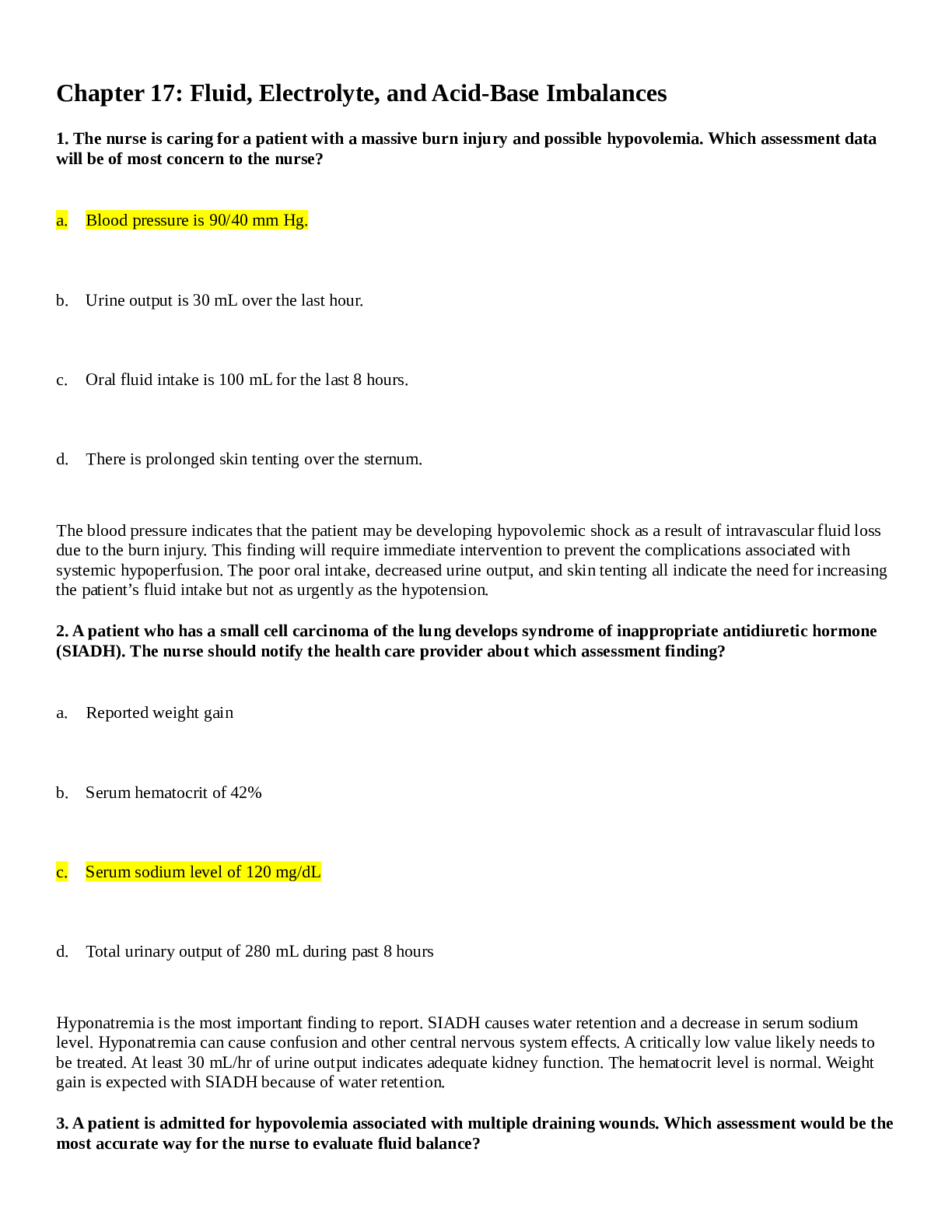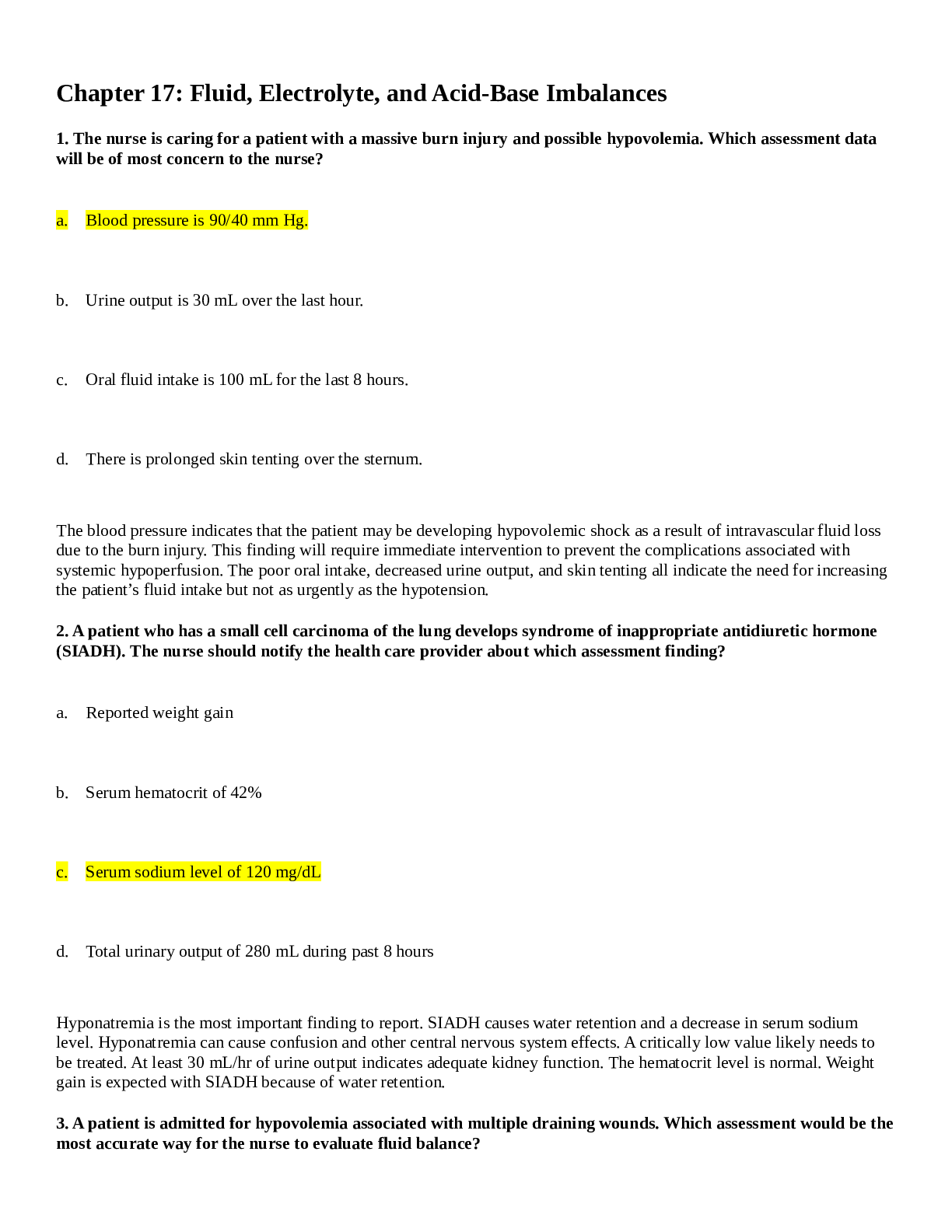ATI PN PROCTORED Fluid, Electrolyte, and Acid-Base Imbalances
Course
Project Management
Subject
Chemistry
Category
ATI Proctored
Pages
18
Uploaded By
ATIPROS
Preview 4 out of 18 Pages


Download all 18 pages for $ 9.00
Reviews (0)
$9.00
